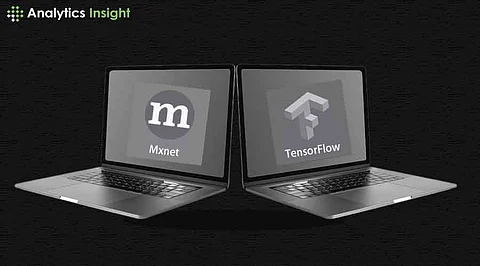

TensorFlow vs. MXNet are considered the two best deep learning frameworks. Both have their advantages and disadvantages. However, these will find an appropriate end use according to the type of project and user. This article will compare these two across several key areas to help you decide what will work best to meet your AI needs.
It was developed by Google and is one of the most broadly used deep learning frameworks. It is flexible and scalable and also has great support from the community. TensorFlow provides a rich ecosystem of tools and libraries.
Including TensorFlow Lite for mobile and embedded devices, TensorFlow.js for running models in the browser, and TensorFlow Extended (TFX) for production-level machine learning pipelines.
Advantages of TensorFlow
Portability and Scalability: TensorFlow supports most CPU, GPU, and TPU platforms and is highly scalable for most types of applications.
Deep Ecosystem: The TensorFlow ecosystem includes loads of tools and libraries that make building, training, and deployment of models more efficient.
Community Support: Well built with a massive community, TensorFlow boasts extensive documentation, tutorials, and third-party material.
Visualization Tools: TensorBoard, which is a TensorFlow visualization toolkit, comes in very handy when trying to monitor and debug models.
Disadvantages of TensorFlow
Complexity: TensorFlow can be quite complex, and hence it is a bit difficult to learn, especially for those just getting started.
Performance: Even though TensorFlow is powerful, it doesn't guarantee performance in any given scenario more than other frameworks do.
The other powerful framework for deep learning is MXNet, developed by the Apache Software Foundation. It is known for being memory-efficient and fast in processing computation. MXNet supports three languages, namely Python, Scala, and Julia.
Advantages of MXNet:
Lightweight and efficient: The framework has been designed light-weighted and fast and provides reduced training times and memory usage compared with other frameworks.
Scalability: MXNet delivers excellent performance in distributed training and hence is ideal for large projects at the machine learning level.
Multilanguage: MXNet supports the development of the code in several programmable languages.
The modularity of the system: MXNet is modularly arranged so that its models can easily be made modular.
Disadvantages of MXNet:
Smaller Community: As compared to TensorFlow, the MXNet has a small community. It therefore sometimes becomes challenging to find related resources and much more support.
Ecosystem Less Mature: While MXNet is very powerful, its ecosystem is not so rich in depth as compared to TensorFlow's.
1. Ease of Use:
TensorFlow is a steep slope of learning because it's very complex, but at the same time, the documentation and support from the community are better. MXNet is easier to use and is efficient so that beginners can get started easily.
2. Performance:
MXNet memory and time efficient. It performs better than TensorFlow especially when the need for fast training times and little memory usage is vital. However, TensorFlow is still updating its performance continually.
3. Community and Ecosystem:
TensorFlow is known to have a larger, more active community. There is rich material both from the community and tutorials besides a heap of third-party tools. MXNet has a relatively small community but has been constantly growing. TensorFlow's ecosystem is more mature, offering a complete range of tools at different parts of the machine learning pipeline.
4. Scalability:
MXNet and TensorFlow both are highly scalable, but MXNet has a better scalability edge in distributed training. It is a different story regarding TensorFlow as its Scalability gets improved with support for TPUs and integration with Google Cloud.
5. Flexibility:
TensorFlow is highly flexible in being compatible with various platforms and offering countless APIs for varying applications. MXNet's modular design also helps flexibility, but it would demand more tweaking in some of the applications.
TesorFlow vs. MXNet – which one do you prefer? If you wish to have a robust environment, good community support, and flexibility in using it, then TensorFlow is the best for you. However, if you require efficiency, usability, and distributed training support, then you need MXNet. Both are great tools for building AI applications, and your choice will depend on the requirements of your project and the capability of your team.
